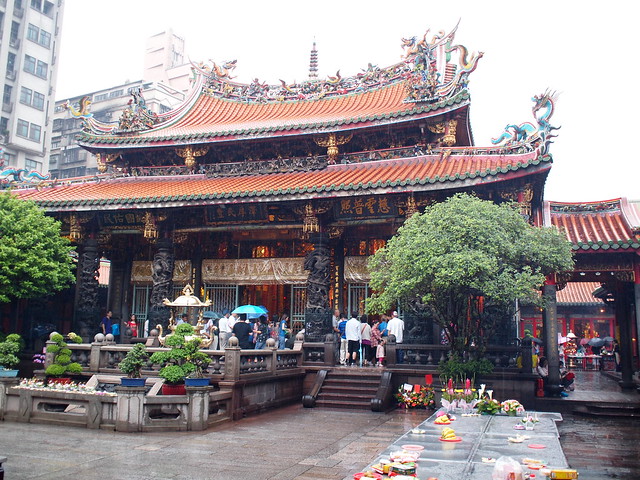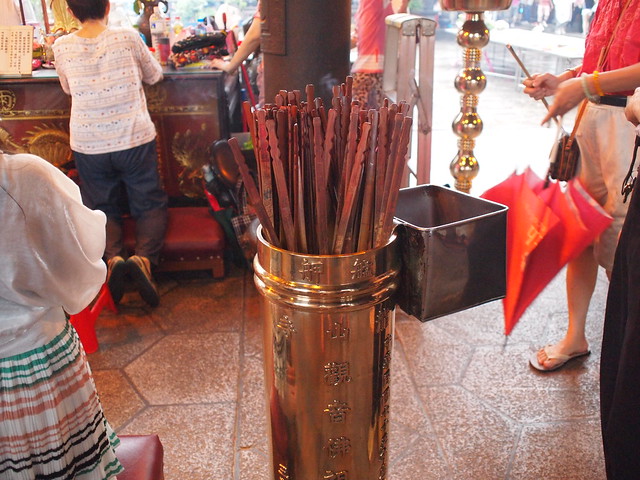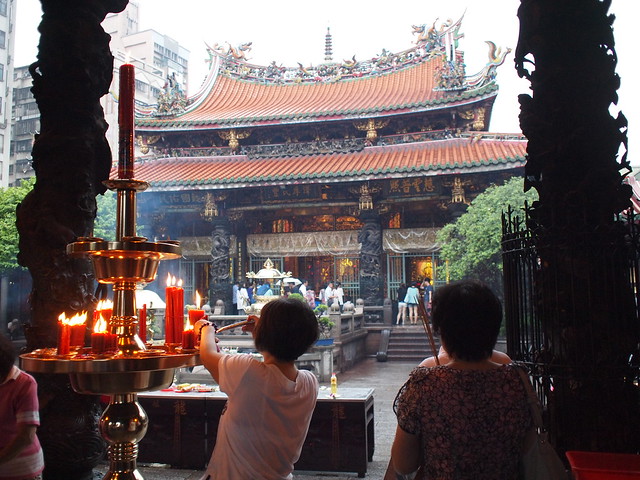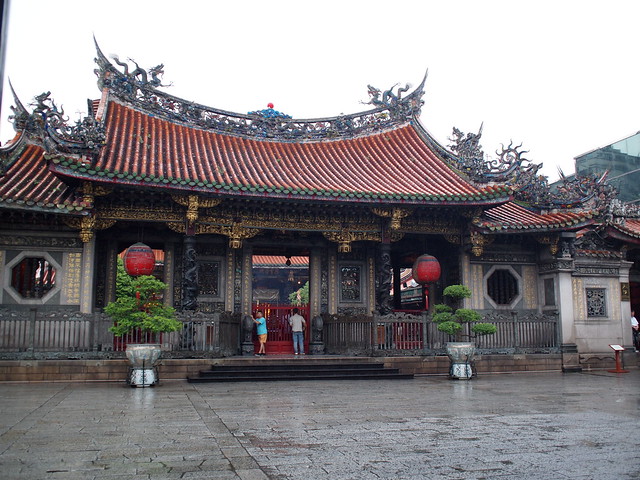Longshan Temple reminds me of the temples I visited growing up. Yet getting your fortune told here is slightly different from what I am used to.
I grew up visiting temples, especially the Kwan Im Thong Hood Cho Temple at Waterloo Street in Bugis. Apart from praying for things like good health, safety and satisfactory exam grades, giving offerings, and getting an amulet, it's common to get your fortune told in a Taoist temple.
Getting your fortune told is similar to that at Sensoji Temple, with a difference being the need to "pua puay" (the term we used in Hokkien) after the fortune stick drops.
Pua Puay? They are also called Jiaobei blocks, or 筊杯. A pair of crescent-shaped wooden or bamboo blocks that usually come in red and are used to answer yes-no questions. One side is round and the other side, flat (Google image search how they look like if you can't imagine).
Apparently there are 4 possible outcomes (yes I just learnt this):
Shèngjiǎo (聖筊, divine answer): One block flat and another block round is a 'yes' answer.Nùjiǎo (怒筊, angry answer) also kūjiao (哭筊, crying answer): Both blocks round is a 'no' answer. It is said that the gods are displeased by the question, and is shown in the way the blocks directly fall flat on the floor.Xiàojiǎo (笑筊, laughing answer): Both blocks flat have different interpretations; either it can be an emphasized 'no' answer and a sign that the gods are laughing at the question, or that they are laughing because the querent knows the answer to his or her question. One characteristic of this answer is when the blocks sway back and forth when dropped, a symbolic show of laughter.Lìjiǎo (立筊, standing answer): One or both blocks fall but stand erect on the floor indicate that the deities do not understand the referent's question, therefore the question is nullified and the procedure must be repeated.When used alone without the fortune sticks, the blocks are thrown three times in order to maintain accuracy of the deity's answer. Credit
Well, to say the least, I expected all Taoist temples to have fortune sticks that you can hold in your hand and shake them out! Well, not in Longshan Temple.
Here are the fortune sticks at Longshan Temple:
So here's how you get your fortune told:
Don't attempt to carry it up and shake it out! Simply run your hand over the sticks, grab one and 'pua puay' (3 times to be safe) to see if you've gotten the 'right' stick. Then proceed to get your fortune (or 'lot') explained by the temple staff or grab a divination book or slip (differs by temple). If you are hesitant, just wait and watch how the locals do it.
If you are wondering how the temple looks like at night, read about my previous visit here (yes I was already fascinated with the fortune sticks then).
More pictures are available on my Flickr (simply click any photo).
Related Posts:
Taiwan Day 1 - Taipei, Day 1:






No comments:
Post a Comment